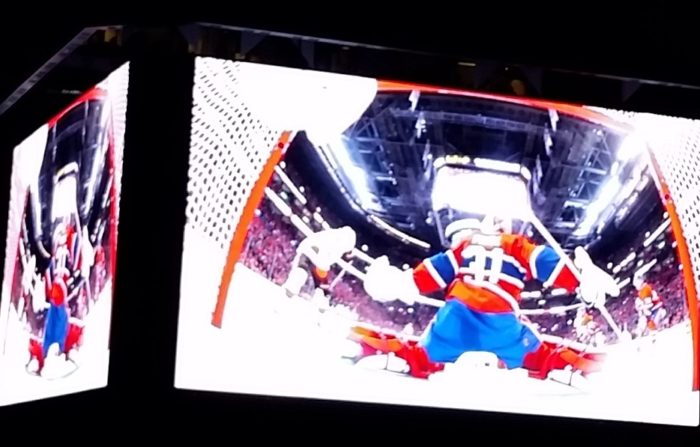Earlier this month my husband and I went to Dublin for a week. We had enough travel miles (which were set to expire) for a trip to Europe, but each of us had only a week of vacation left before the end of our respective employers’ May 30th vacation periods.
As we were planning our trip, we’d often be asked “Why Dublin?” Here in Montréal, the two most common European destinations seem to be London and Paris. We’d already visited each of those cities, as well as a few other gorgeous European locales.
My beloved grandmother was from Scotland, from north of Inverness, so a visit to the Highlands and Islands had been on my list of places to visit since childhood. By this time, we’d already been to the country of my childhood stories – twice. First to visit Edinburgh, Inverness, the Isle of Skye, the Orkneys, and the entire northern coast of Scotland.
Our second visit was for the wedding of dear friends, in St Andrews, in 2007. We extended that trip by two weeks to include stays in Edinburgh, Stirling, and another week on the Isle of Skye. My heartfelt thanks to Siobhan and Steve, for asking me to do a reading during their wedding inside the ruins of St Andrew’s Castle. This remains one of my most memorable travel – and life – moments.

When the movie “The Bucket List” came out at the end of that year, a friend and I got together to talk about our own bucket lists. For me, seeing the Montreal Canadiens hockey team win another Stanley Cup – soon! Hopefully with my favourite goalie, Carey Price, in the nets!
And my bucket list included two sights to see in Ireland:
- The (Scottish!) Book of Kells, at Trinity College Dublin(1)
- Newgrange, the Neolithic passage tomb (2) about an hour’s drive from Dublin
Meanwhile, my husband’s interest in his Irish heritage had been piqued by our visits to my grandmother’s home country. His family has a mostly French background, but his maternal great-grandmother O’Brien had come to Canada from Dublin during Ireland’s Great Famine; sometime between 1845 and 1849. From her he inherited his green eyes, and perhaps his wry sense of humour. A visit to Ireland was definitely on his bucket list.
So with enough points for free flights to Europe, but only a week of vacation time, Dublin was an easy choice of destination. As always, we were thankful to have the means to travel and to be in good enough health to do so. And yes, we had a fantastic trip.
And yes, I got to check two items off my bucket list! We saw the Book of Kells, along the stunning Long Room inside the Old Library, at Trinity College. We spent a day visiting Newgrange and the Hill of Tara; a mythical site, from at least the Neolithic age. The Hill also holds an important space in celtic history, having been the inauguration seat of the high kings of Ireland.
Among the activities we crammed into that one week were spooky haunted Dublin walking and bus tours, a literary walking tour, and the Howth Coastal Walk. From Howth we took a boat tour to Ireland’s Eye, a small island just off the coast on which lie the ruins of a sixth century monastery.
Then there were the many museums, the Jameson Distillery tour (during which I was selected to be one of the official whiskey tasters for the day!), and the Guinness Storehouse interactive industrial museum – with its 360 degree views of Dublin, from the circular glass-walled Gravity Bar at the top of the building ‘-)
We honoured Dublin’s bustling nightlife as well! We listened to so many wonderful musicians, performing in and around the Temple Bar area. We went to see Irish dancers performing at The Church, a nightspot inside a… decommissioned church. We even managed to squeeze in a film at the Irish Film Institute; Brendon Gleeson was superb as the star of Calvary, a noir comedy film.
Most touching was a tour of the Jeanie Johnston Tallship Museum(3), a replica of a ship built in Québec City in 1847 by a Scottish-born shipbuilder. This ship carried Irish families to North America 16 times, between 1847 and 1855, with no loss of life.
No small feat during that period, particularly considering that she was built as a cargo ship rather than for passengers. The seaworthy replica is moored at a quay in Dublin, close to the harbour, so we got a taste of the movement of the waves on that stormy day.
Our tour guide vividly described the Famine, the living conditions for the ship’s passengers, and even the history of some of the families who’d left Ireland aboard the Jeanie Johnston. The Ship’s museum has made efforts to track down as many descendants of these families as possible.
There was an American family on our tour, whose relative had travelled aboard the Jeanie Johnston to Boston. When my husband mentioned his great-grandmother’s story, our guide’s eyes lit up. He made a quick call to the Ship museum’s research office, to ask them to verify their recently-digitized passenger manifests.
They weren’t able to confirm her passage, but did tell my husband that most of the Jeanie Johnston’s trips had been Québec. So it was definitely possible, perhaps even likely, that she would have sailed on the original Jeanie Johnston. Our ship guide told us that they very rarely have visitors from Montréal or Québec, so their whole team was very happy to meet a potential descendant of one of her passengers who had settled there.
It was a fantastic moment for my husband, extremely moving, to see the conditions in which his great-grandmother would have come across the pond from Ireland. For us to be visiting a replica of the very ship on which she might had travelled. For a few moments, we forgot it was a replica ship; we felt as though we were aboard the real Jeanie Johnston!
Making our trip even more special for my husband, it coincided with the millennium celebrations marking the death of Brian Boru (High King of Ireland) and his Battle of Clontarf; against the Norse, or Vikings, who’d settled in the Dublin area. Everywhere we went, there seemed to be displays and events featuring the O’Brien name – derived from Brian Boru. Almost every museum had a special Brian Boru exhibition for the year – even Dublin’s Viking Museum.
Why bring up a trip to Dublin, in a post about bioethics? Because of the concept of bucket lists, of the things a person wishes to do before they die. We’ve all heard tales of a terminally-ill patient who had desperately wanted to do some one thing before they became too ill – but were unable to do. Something that they’d really have liked to have done, before they died.
Were you able to do anything to help them achieve that bucket list moment, even partially? Did it even cross your mind to do so, that this might in some small way ease their passing? I read an interesting news item last week, which was the catalyst for this post.
What if a (relatively) new technology could let you do just that; to help a dying patient ‘live’ an experience, without ever leaving their bed? A virtual reality (VR) headset and computer program have now been used to allow a dying woman to do something that she was no longer able to do; take a walk outside. While still sitting in her chair.
The idea is that: “It’s about using something that was thought of as just a video game, a toy… and turning it into something more important than anyone could ever really understand.”(4) To be clear, I have no stake in any VR companies or technologies. What I do have is the hope that there will come a time in which palliative care could incorporate this technology. Imagine a library of VR tours and experiences, which could be offered to terminally ill patients.
Imagine an intake form for (responsive) new palliative care patients – who could tolerate the VR headset, sensation of motion, etc. – that includes a checklist of ‘experiences’ in which they could be virtually immersed. The VR experiences would have to be somewhat generic (for cost reasons), rather than providing personalized images of one’s family or home.
But this VR technology could permit someone who loved to sail to be back on a boat for a few minutes. The VR experience includes only sight and sound, but could be heighted by adding a breeze – from a fan.
A patient who loved to travel could visit a new city… The opportunities would seem to be endless, limited only by the cost and resources required to support this type of service to terminally ill patients. Sterilization and proper storage of the equipment, for example.
And someday, if VR technology becomes less expensive (as happened with the transition from 8-track tape to video tape, then to on-line media), this could be offered to larger numbers of patients in hospitals or other care centres.
Pediatric hospitals could offer visits to theme parks, the inside of movies or storybooks, to allow children to temporarily escape the confines of a clinical environment. Or to play outside, even if they can’t leave their hospital beds.
That’s why this post started with a discussion of some of my bucket list dreams; to put you in that frame of mind, of thinking about what might be on your own bucket list. To imagine how this new technology might help terminally ill patients live out some of their bucket list experiences, before they run out of time.
References:
(1) The Book of Kells. The Library at Trinity College Dublin, The
University of Dublin. Web:
https://www.tcd.ie/library/manuscripts/book-of-kells.php
(2) Brú na Bóinne. Department of Culture, Heritage and the Gaeltachts’
World Heritage Ireland. Web:
http://www.worldheritageireland.ie/bru-na-boinne/
(3) Jeanie Johnston Tall Ship museum. Web:
http://jeaniejohnston.ie/history/
(4) David Moss and Nicole Edine. Virtual Reality Lets Dying Woman Walk
Outside Again. Huffington Post. 25 Apr 25, 2014. Web:
https://www.huffingtonpost.com/2014/04/25/grandma-occulus-rift_n_5213297.html

